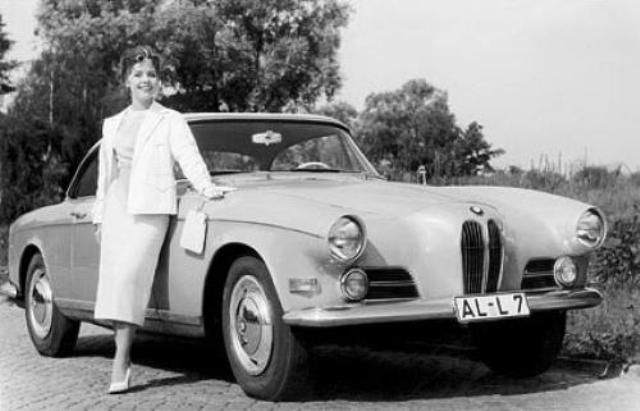In terms of history, very few car manufacturers can claim to have a more colorful history than that of BMW. Starting off as an aircraft company during the First World War, BMW has evolved into one of the most popular and magnificent car manufacturers in the world.
While the German car manufacturer has rolled out some of the most memorable vehicles in automotive history, there are still those models that are head and shoulders above the pack. One of this is the 1959 BMW 503, a car that has become a staple among all car enthusiasts all over the world.
The 1959 BMW 503 on exhibit is a testament to the impeccable restoration efforts done on the car. The car was released back in 1959 after being modeled after the chassis of the BMW 501/502 series. Taking elements from both cars – including a 3.2-liter V-8 engine and the Type 502 sedan box-and tubular-section chassis – the BMW 503 quickly became regarded as BMW’s first postwar sporting car.
Released as coupes and cabriolets, the 503’s coachwork was designed by a German-American named Count Albrecht Goertz – a departure from the more traditional BMW sedans that dominated the area back then. Although different in classification, the 503 still retained the same wheelbase as the 502 with the unmistakable long hood, short deck propositions, giving BMW its car that would inevitably go toe-to-toe with rival Mercedes Benz’s 190 and 300SL models.
The knock on the 503 at the time was its relatively large bulk, which compromised the maximum speed the car could churn out. As a result, BMW developed an upgraded version of the V8 engine; one that featured improved breathing and twin Zenith carburetors, pumping the output to 140bhp. As a result of the spike in performance, the same engine was later on used in the 507 Roadster – one of the Holy Grail models of BMW.
The BMW 503 on-display comes fully-detailed with a Brilliant Silver finish and is likewise fitted those extremely limited Rudge wheels – a stable back in the 60’s. The car’s interior comes with a Blaupunkt radio from back in the day, a floor-shift four-speed transmission plus many more of the original 503 paraphernalia that has been meticulously preserved to ensure that the car retains its original aesthetics and artistic appeal.
The 503’s body has been streamlined to perfection, nary a scratch, dent, or rust visible from the body – remarkable considering the car has been around for almost half a century.
The chrome details in the car’s exterior remain in excellent condition, as is the unsullied work done on the car’s leather interior. In line with the car’s appearance, the 503’s engine has also been fully reconditioned and restored, giving it the eye-catching and awe-inspiring feeling that can only be generated by a manufacturer like BMW.
With the length of restoration done on the BMW 503, it only seems fitting that this one-of-a-kind automobile deserves a place in any vintage car exhibit.

